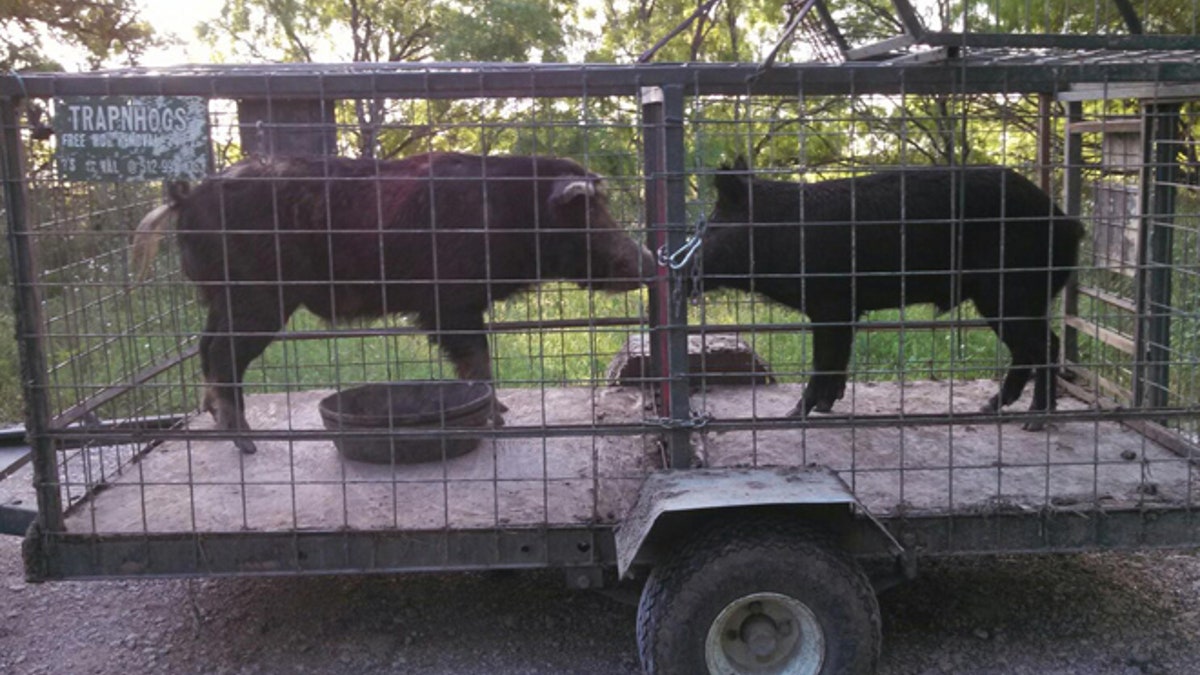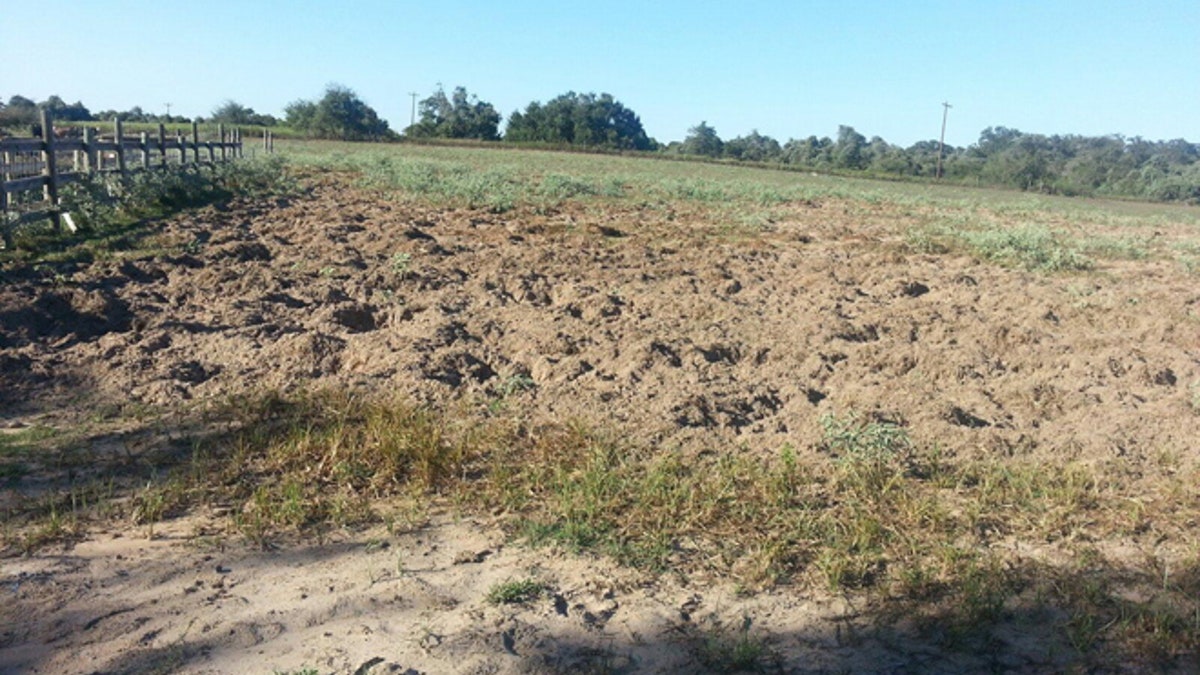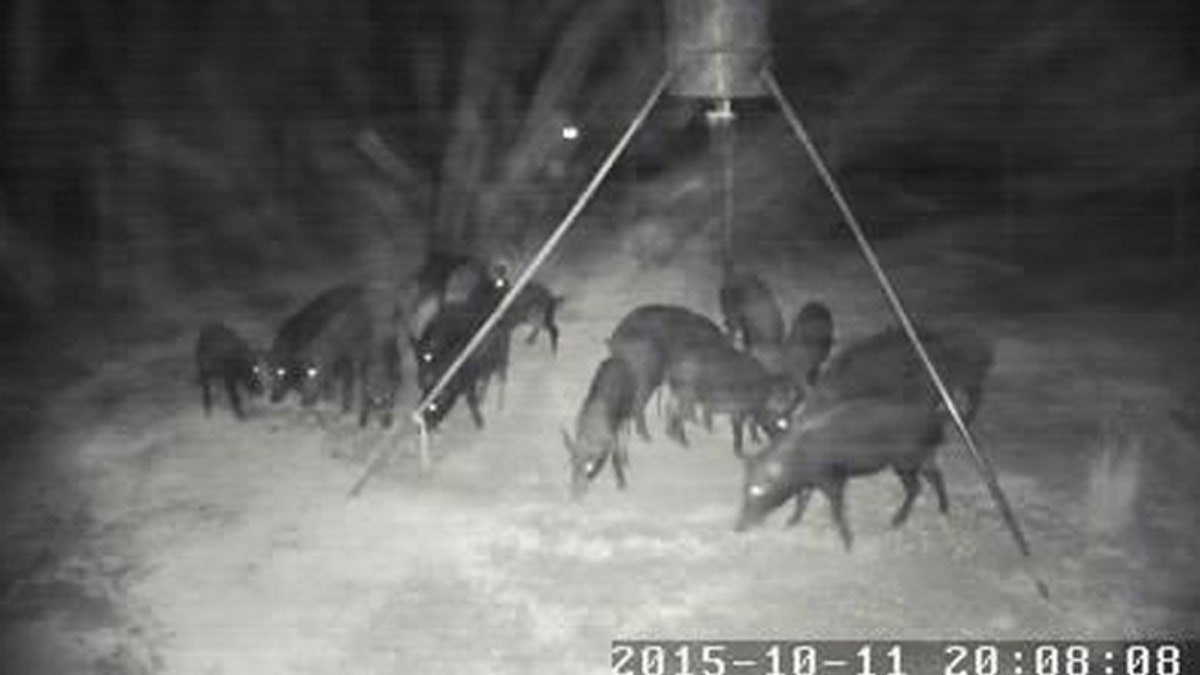
Caldwell County in Central Texas is the front line in the Lone Star state’s battle against feral hogs. (Courtesy of Val Ramirez)
A county in Central Texas is winning the war on feral hogs one tail at a time.
Caldwell County has become the Lone Star State's front line in the fight to curb the exploding population of the wild beasts, which cause millions of dollars in property and environmental damage every year. A volunteer task force has found success using a host of strategies including $5 tail bounties, helicopter hunts and smartphone-controlled corrals.
“One hog can become 200 over the course of two years.”
“We’re probably the most coordinated program in the state,” Nick Dornak, founder of the county’s Feral Hog Task Force, told FoxNews.com.
In the two years since it was founded, the task force has helped kill or capture 10,000 of the wild swine, providing a model – and hope – for other counties dealing with the nearly 20-year-old wild hog boom.

The Caldwell County Feral Hog Task Force pays $5 for each feral hog tail it collects. (Courtesy of Val Ramirez)
The feral hogs -- which are much larger, meaner and wilier than their farm-raised cousins -- destroy crops, break farm machinery and pollute rivers and streams. Dornak estimated the hogs cause $2 million in damages every year in the agricultural community, devouring crops and digging ruts that damage tractors and other equipment.
When they are not sowing a path of destruction, they are breeding, he said. Sows can bear two litters per year, with each litter consisting of up to a dozen.
“One hog can become 200 over the course of two years,” Dornak said, noting that 70 percent of the hogs must be killed each year just to maintain current population levels.

The feral hog-- often referred to a razorback or wild boar--has exploded across rural America in recent years. (Courtesy of Val Ramirez)
The hogs are shot by hunters, sometimes from aboard helicopters, and trapped along the waterways they travel. Others, including entire broods, are caught in giant corrals that are closed remotely after the quarry is lured inside.
Of all the methods employed by Dornak’s porcine patrol, the $5 bounty for tails has been one of the most effective – at least in terms of monitoring the number culled. Setting up a roadside table, he and his fellow volunteers have paid out thousands of dollars for the tails that prove there is one less wild hog in the area. Funding comes in part from $100,000 in state and county grants, according to the Austin-American Statesman.
Wild hog meat is leaner than farm-raised pig, and requires extra care in cooking because they can carry diseases. But when handled properly, “it’s just pork,” Dornak said.

The wild pigs will often forage for food at night. (Courtesy of Val Ramirez)
“It’s good meat, especially if the hogs are kept in good condition,” Dornak said.
The tails can be turned in by hunters who kill the hogs or by farmers and ranchers, who buy and take them to market. Hunters, who face no restrictions on the number of hogs they kill, can get up to $300 each. Some report bagging hundreds per year.
“In the last two years I’ve gotten out of the red and into the black,” Val Ramirez, a landowner and hog trapper in Caldwell County, told FoxNews.com. “On average, (the revenue from selling wild hogs) runs between $13,000 and $18,000 a year.”
The feral hog -- often referred to as a razorback or wild boar -- has seen an explosion in population across rural America in recent years, with an estimated 6 million nationwide. Nearly half are believed to inhabit Texas.
Hogs were first introduced to North America by Spanish settlers. The breed most commonly seen in Texas is a mixture of those hogs and Russian boars brought over more recently for sport hunting, according to the Texas Parks and Wildlife Department. Some speculate the population boom is due to relatively recent cross-breeding in the wild.
In Caldwell County, the hogs travel along the San Marcos River and Plum Creek, leaving behind large amounts of fecal matter and polluting the waterways in the process. Ramirez sets up dozens of traps along the creek and on the land of other ranchers looking for help.
“They are just a nuisance,” he said. “We are not going to get rid of them completely. Trapping will never get rid of all of them, but at least we can try to curtail them.”

